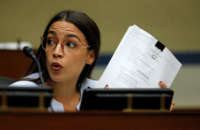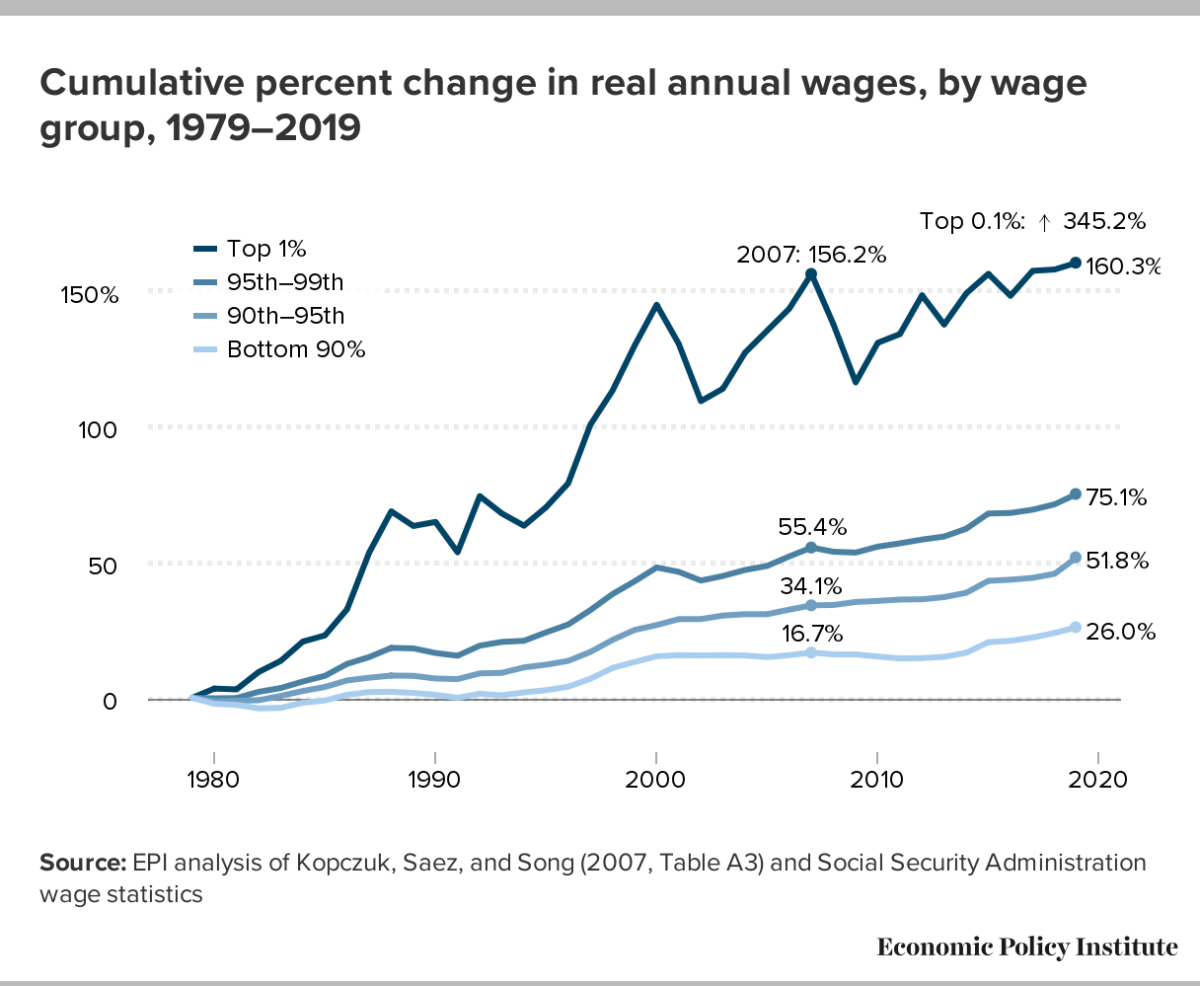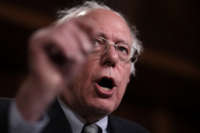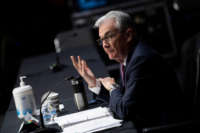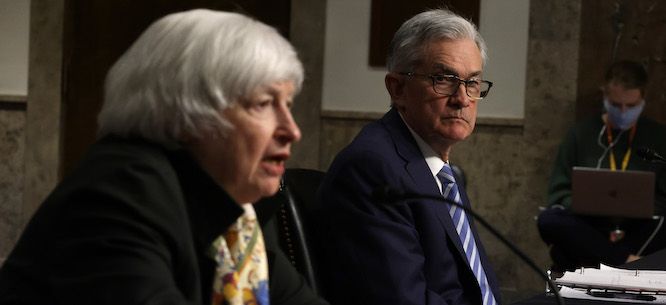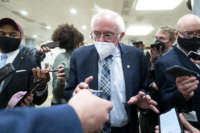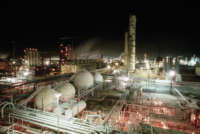The U.S. Labor Department said Tuesday inflation in the United States rose to 8.5% in March — the highest in four decades. Meanwhile, Oxfam is warning over 260 million people around the world could be pushed into extreme poverty by the end of year due to the pandemic and rising energy and food costs. For more on the growing inflation crisis, we speak with economist Jayati Ghosh, who says prices of essentials are soaring much higher than can be explained by oil prices and supply shortages alone, because of what she calls “feverish speculation” in financial markets and corporate profiteering. She also speaks about how the Global South sees the West’s response to the Russian invasion of Ukraine as deeply hypocritical when compared to the growing humanitarian crises in places like Yemen and Afghanistan, and calls on the International Monetary Fund to reverse practices of pushing austerity in less wealthy countries and instead focus on massive public spending to combat existential crises like inflation and climate change. Her recent article is titled “Putin’s War Is Damaging the Developing World.”
TRANSCRIPT
This is a rush transcript. Copy may not be in its final form.
AMY GOODMAN: This is Democracy Now!, democracynow.org, The War and Peace Report. I’m Amy Goodman, with Juan González.
We look now at the soaring price of energy and food around the world. The U.S. Labor Department said Tuesday inflation in the United States rose by 8.5% in March — the highest it’s been in 40 years. Meanwhile, Oxfam is warning over 260 million people could be pushed into extreme poverty by the end of the year due to the pandemic and rising energy and food costs. Oxfam International said, quote, “Without immediate radical action, we could be witnessing the most profound collapse of humanity into extreme poverty and suffering in memory.”
For more, we’re joined by Jayati Ghosh, economics professor at the University of Massachusetts Amherst, previously an economics professor at Jawaharlal Nehru University in New Delhi, India, where she taught for 35 years, just appointed to the U.N. Advisory Board on Effective Multilateralism. Her recent article on the increase in commodity prices following the Russian invasion of Ukraine is headlined “Putin’s War Is Damaging the Developing World.”
We welcome you to Democracy Now! There is a lot of news in the United States, Professor Ghosh, about inflation, with the numbers just out yesterday, worst in 40 years. If you can talk about that and then put it in the context of the world?
JAYATI GHOSH: Yes, absolutely. There’s no doubt that it is high inflation, and it’s much higher inflation, I think, than many people, including in the administration, expected. It’s driven really by the fuel prices. And food prices matter, but to a much much lesser extent in the U.S. It’s dominantly the price of oil that is driving this. There are supply chain issues in a number of other smaller areas, like automobiles and so on. But this is a cost-push inflation, as economists call it. It’s the rise in costs of fuel, which is something that is used in everything else. It’s used in the production of many, many other goods and services. It’s used in transport. And so it doesn’t just affect the prices at the pump, it actually affects all the other prices in the economy.
The problem is that then governments say, “Oh, well, what we have to do is to get the central bank to tighten monetary policy, to raise the interest rates.” That’s not the problem, because that’s not the solution. That doesn’t affect the cause of the inflation. So you really have to think of different measures in this situation.
JUAN GONZÁLEZ: And what parts of the rising inflation, or what percentage, roughly, do you attribute to the invasion and the subsequent sanctions against Russia, and what part to structural problems within the world economy, in general?
JAYATI GHOSH: This is a very interesting question, because we know that both these prices — food and fuel — were rising even before the Ukraine war. What happened thereafter is a dramatic and very sharp increase, even beyond the increase that we were already getting. At that time, before the Ukraine war, the fuel prices accounted for about 30% of the increase in U.S. inflation. Now it’s more like half of the proportion of inflation that it’s determining. But the prices themselves have gone higher than you would expect given the actual impact on supply.
It’s absolutely true that, you know, Russia is a major exporter of oil and natural gas. But, hey, its volumes of exports haven’t fallen that much. They’ve just been diverted to other countries. It’s also true that both Ukraine and Russia are major suppliers of food grain. Ukraine does wheat and oil seeds. They also supply fertilizer. So all of those are impacting food production globally. But the prices have actually shot up well beyond what you would expect through just that supply decline.
And that’s because there’s been very feverish speculative activity in what are called the commodity futures markets. These are markets anticipating the price one month from now, three months from now. And those prices have just gone haywire over the last six months, with massive involvement of speculative activity and then declines in them as they rush out of one commodity into another. So, a lot of the destabilizing impact of speculation on what are called these futures markets is impacting the current price, the spot market, as well.
JUAN GONZÁLEZ: And there has been an economic impact on the Global South, obviously, from inflation, and fueled, as you say, also by the aftereffects of the war. But there’s also been — and this hasn’t been noted too much in the media coverage in the West — a sharp divergence in public opinion in the Global South about this war versus the public opinion in the West. In countries like Indonesia, some of the largest countries in the world, Pakistan, Brazil, China, public opinion is much more sympathetic to the Russians than it is to Ukraine, and certainly much more so than in the West. I’m wondering why you think that is happening?
JAYATI GHOSH: Well, let me take your second question first. I think what is really striking — and I don’t people in the West realize it — is the extent to which the hypocrisy in the sort of moral double standards are evident in this Ukraine war. I mean, yes, it is terrible, what is happening. It is a brutal and completely unjustified invasion, and people are dying, and people are suffering. But more people have died in Yemen in the last three months, with arms provided by the U.S. and very, very brutal attacks. Children are starving in Yemen and in Afghanistan because of U.S. policy. And so, you know, everyone else in the world is saying, “How come it’s only when there are white Europeans who are affected that you care at all?” I think the — you know, really, I don’t think people in the West realize the extent to which they have absolutely lost moral legitimacy in terms of the very, very different reaction they have exposed in this war to white European lives and all other lives in the rest of the world. This is not lost to anyone in the developing world. There is a very, very strong reaction.
And this is going to affect all kinds of things. It’s going to affect the possibilities for multilateralism. It’s going to affect whether G7 has any standing at all to ask countries to do anything. And it’s going to affect whether people go along with the U.S. and Europe in doing sanctions when the U.S. and Europe wants to do it, but not for other equally terrible acts that they themselves are party to. So, I really do believe that people in the West need to wake up and realize how much damage has been done to their own very limited conception of what is moral and ethical, when the rest of the world is very, very evident of what is going on.
AMY GOODMAN: I’m wondering, Professor Ghosh, if you can talk about the actual corporations, if you could name names of the large corporations that are making a killing off of what’s happening right now, that are making huge profits. I mean, we know when it comes to, for example, gas, and many in the United States have asked — they would say, “Well, people are paying $5 or $6 because of the war, Russia’s war in Ukraine.” But it turns out that ExxonMobil and BP — all these oil companies are making more money right now than ever in their history. If you can talk about the same when it comes, overall, to inflation and food prices, as well?
JAYATI GHOSH: So, this is the whole issue, that, you know, once you get some increase in prices, companies see this as a terrific way of quickly making additional profits by raising their prices even more than is justified. So, yes, there is, as I have mentioned, this cost-push element, but what you’re also getting is profiteering, plain and simple. So, companies, as you mentioned, in the oil sector, companies in the food sector, companies in a range of other sectors are raising their prices much more than is justified by the increase in their own costs. And they can do this because there’s a whole atmosphere of inflation expectation. And this enables them to — there are no limits.
I mean, this is a time when, really, you have to have public policy which is regulating companies like this. And it’s possible that governments can do it. You have to regulate the companies that are openly profiteering. You have to set some controls on the prices of essentials, that enter into all other prices. And fuel is one of them. You really have to make sure that those prices are regulated and determined. So, the notion of this free market is completely false, because these are big fat companies — oligopolies — that can control the market. And so you really have to make sure that governments regulate those prices.
The same thing is true internationally. We are getting the big players in agribusiness raising prices of basic grains and foods well beyond what is justified by the increase in costs. And this is affecting people in the developing world who are already much worse off than those in the U.S. and Europe, who already experienced the pandemic much worse, because they had decline in employment, falling livelihood, falling money wages. They haven’t had a recovery. Their governments haven’t had the money to spend, that has been spent in the U.S. and Europe. They are still well below levels of employment that were there before the pandemic. And now they’re facing these huge increases in food prices and fuel prices that really are just going to make massive increases in poverty and hunger globally.
So we have to address the problem at the root, which is in terms of the ways in which prices are structured, the companies that are allowed to get away with straightforward profiteering in times of crisis, and bring in regulations and controls that will prevent that.
JUAN GONZÁLEZ: And speaking of these protests that have begun to develop, especially in the developing world, in Sri Lanka, there was a mass protest over the cost of essential goods. And on Tuesday, the country stopped its international debt payments, effectively defaulting on its debts. Do you foresee a potential debt crisis across the developing world as a result of these inflationary forces?
JAYATI GHOSH: Yes, absolutely. And this is something we had predicted a year ago, actually, even before the Ukraine war. The Ukraine war has, if you like, accentuated and intensified the problem. But it’s not just economists like me. The IMF has predicted this, that if you don’t do something about, first of all, the huge overhang of debt that already a lot of countries had, then the knee-jerk response of countries in the North, U.S. and Europe, to raise interest rates, so capital — all the capital comes back to these countries, and then you get massive volatility and capital flight from all the developing countries, you’re going to get massive debt crises. This is just the beginning. This is, if you like, the first step towards the abyss.
AMY GOODMAN: I wanted to ask you about the inquiry that you’re taking part in today with Progressive International, which was founded by, among others, the independent Vermont Senator Bernie Sanders, as well as Yanis Varoufakis of Greece. Can you talk about the inquiry into the IMF and how that relates to what we’re talking about?
JAYATI GHOSH: Well, you know, I think many people in this inquiry are going to be arguing that the IMF had been guilty of many sins of commission and omission. I think the sins of commission are very important, but they’re well known. Let me quickly highlight. The IMF goes into countries that are in deep crisis, and says, “Cut public spending.” And it’s part of the way they are supposed to somehow bring these countries back into balance, by saying, “You reduce government spending, you impose austerity, and investors will feel more confident. Private investors will then come flocking in.” That rarely happens. All that happens is that the problem gets much, much worse.
There are many ways in which the IMF has had a very double standard, again, in terms of the rich countries and the not-rich countries, the middle-income and low-income countries, because in the rich countries they say, “Yes, spend more. You have to be countercyclical. You have to revive the economy.” In the middle- and low-income countries, they say, “Oh, you have to cut down on your spending, because you have to reduce your deficit. You have a very large debt. You have to make sure you can somehow reduce that debt” — in the period of crisis. So, in turn, they then demand extra fees and commissions. They impose surcharges on the countries that are worst off, that have had to take IMF loans for a longer period or take larger IMF loans, which is absolutely ridiculous. It’s the IMF making profits out of a catastrophe in all of these countries. So these are the sins of commission, which are very great and have had devastating consequences across the world, really.
But the sin of omission, I would argue, is actually even greater. The IMF is the only multilateral agency we have today that handles global finance and can think of international financial arrangements to do with crises, to deal with the challenges that humanity faces. We don’t have any other structure. Now, humanity, we know. First there was a pandemic. We know that there could be well more pandemics and so on. But there is climate change, which is, again, already upon us, which is affecting agricultural supply, which is affecting coastal sea rises, which is affecting livelihoods, which is causing already significant increases in environmental destruction, in hunger, in employment loss, in people having to move, displacement, all kinds of things.
You have to bring in massive public spending. And the IMF is the agency that can do it. Where is the ambition that can actually provide this minimal funding for the huge climate challenges that we face globally? And which, really, again, you can’t be nationalist about this. Climate doesn’t respect passports and visas. It’s not stopping to wait at the border. It’s going to affect everybody, if we don’t do something now. And the IMF has been remarkably unambitious, sluggish, I would say, really not doing the minimum that it’s supposed to do. It was created just after the Second World War in a very, very different world, with this power structure that is completely ridiculous now, with the U.S. being able to block everything, U.S. and Europe controlling 60% of the voting rights and all that. But as a result, it really hasn’t moved to do the basic things that a multilateral organization that is in charge of global finance has to do — prevent private finance from —
JUAN GONZÁLEZ: And you were —
JAYATI GHOSH: — doing crazy — yes.
JUAN GONZÁLEZ: — talking about climate change. You mentioned climate change. How has the eruption of this war affected efforts in various countries? Even in the United States, we’re seeing President Biden backtracking on some of his proposals in terms of reducing our carbon footprint. Could you talk about the impact of the war on climate change?
JAYATI GHOSH: It’s very unfortunate that the Ukraine war has shown that whenever there is any immediate crisis, governments across the world are going to not just backtrack, they’re going to reverse on all of the commitments in terms of carbon emissions, in terms of moving to greener energy, in terms of everything. So, even a war like this, which is, let’s face it, a limited war in one part of Europe, is causing everyone in the world to completely forget about all of their major promises and strategies, some countries going back to coal, some countries emphasizing the dirtier kinds of fuel, forgetting about all of the attempts — instead of saying, “Well, look, now let’s actually push for greener energy; because oil prices are high, let’s push for greener energy,” they’re saying, “No, no, quickly, grab all the possibilities for the dirtiest energy possible.” It’s the United States. It’s Europe. It’s India. It’s China. It’s everyone in the world. No country has actually — or, very few countries have actually said, “Let’s use this as an opportunity to move much more directly into green energy sources with public funding,” which is really what should be the response. This is terrifying, because it means today it’s the world, tomorrow it can be anything else. Governments are not committed. They’re not seeing the writing on the wall. They’re not recognizing the clear and present danger of a climate catastrophe.
AMY GOODMAN: Jayati Ghosh, we want to thank you for being with us, economics professor at the University of Massachusetts Amherst. Her recent article, we’ll link to, following the Russian invasion of Ukraine, headlined “Putin’s War Is Damaging the Developing World.”
Next up, speaking of economics, we get an update from the growing Starbucks union drive that’s spread to 200 stores in 30 states. Back in 30 seconds.
This post was originally published on Latest – Truthout.
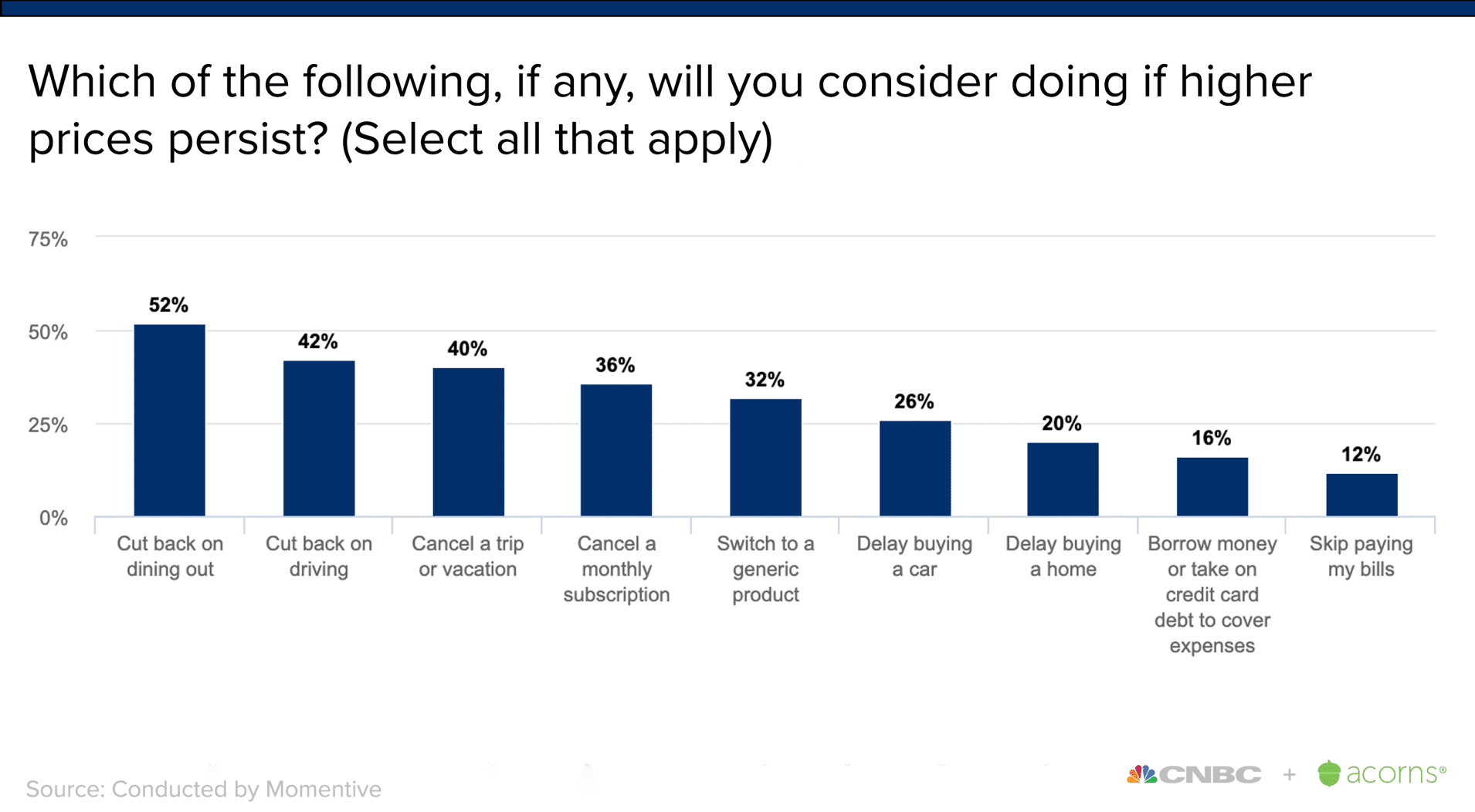
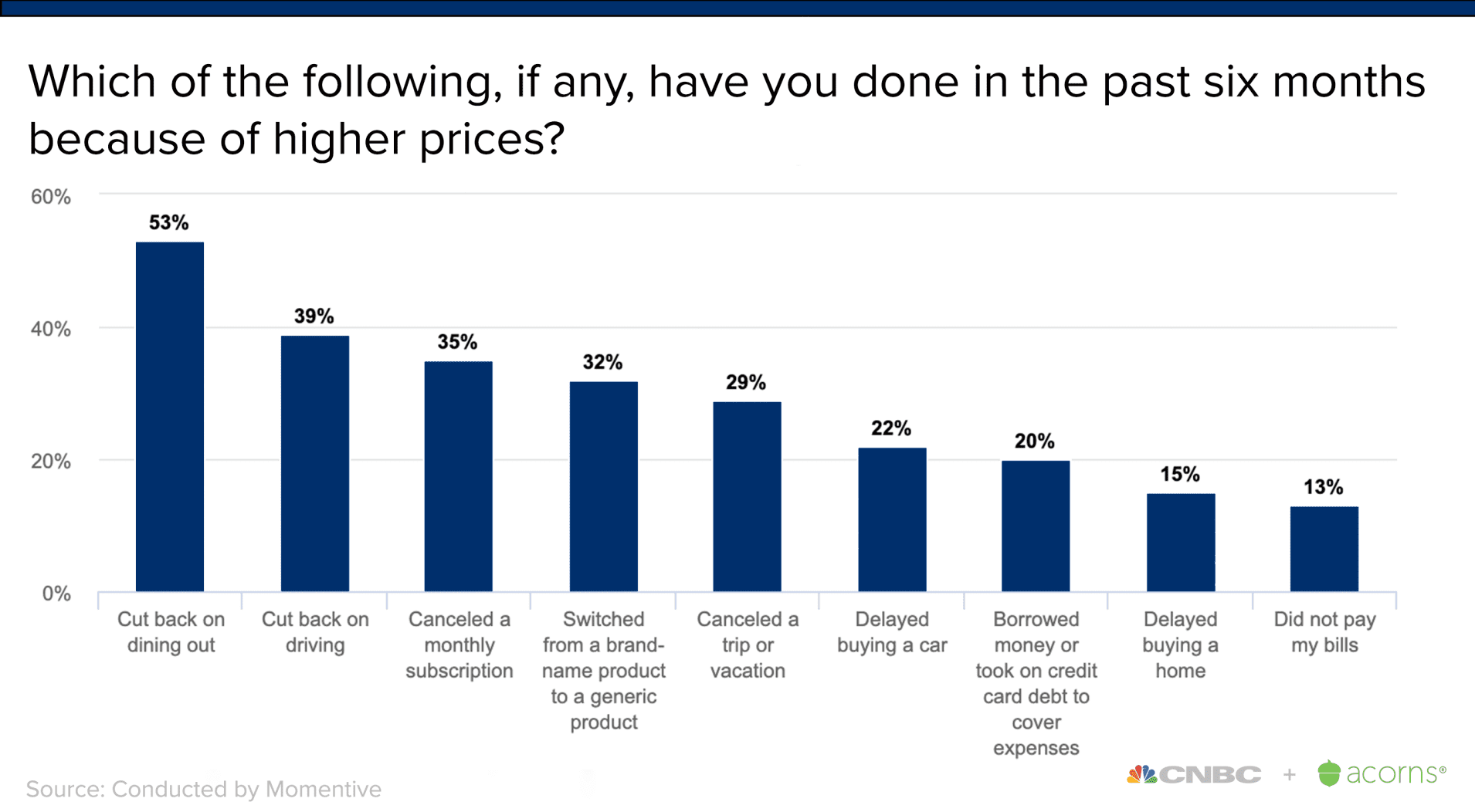


 Sky 501
Sky 501 